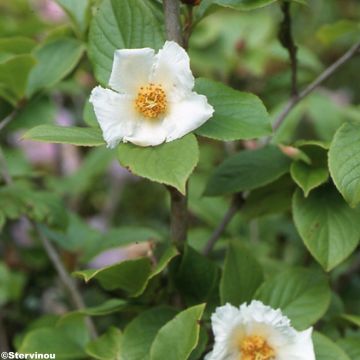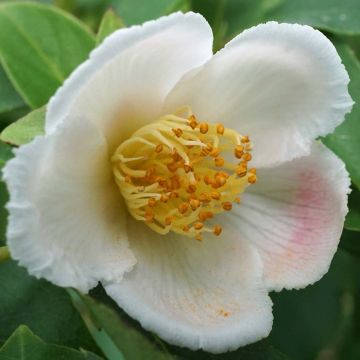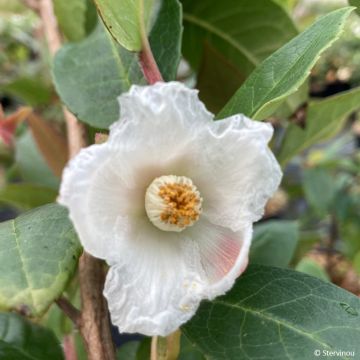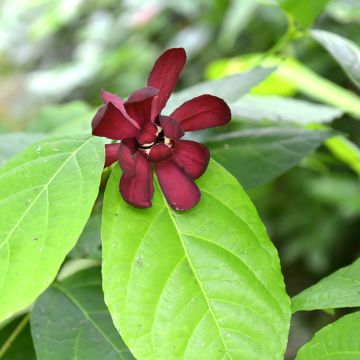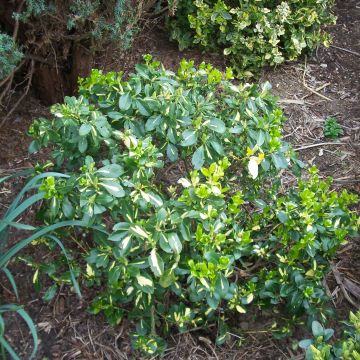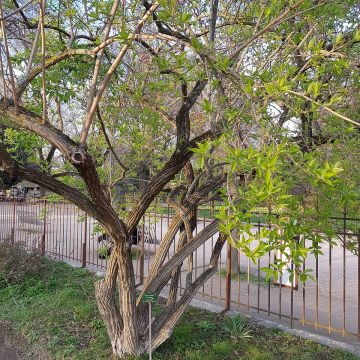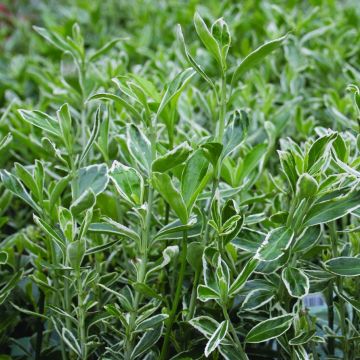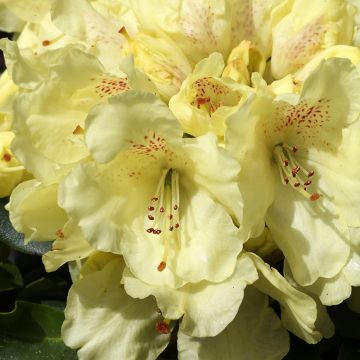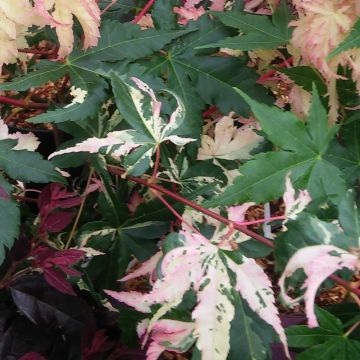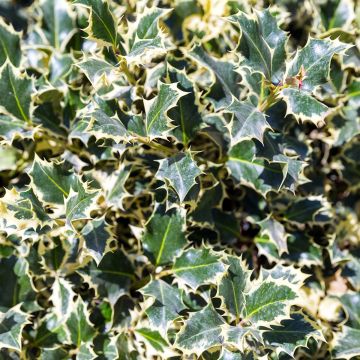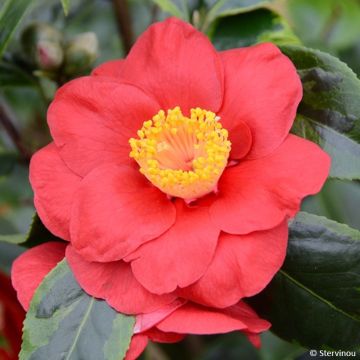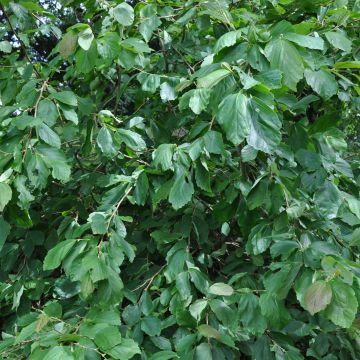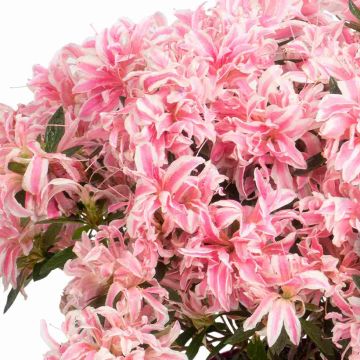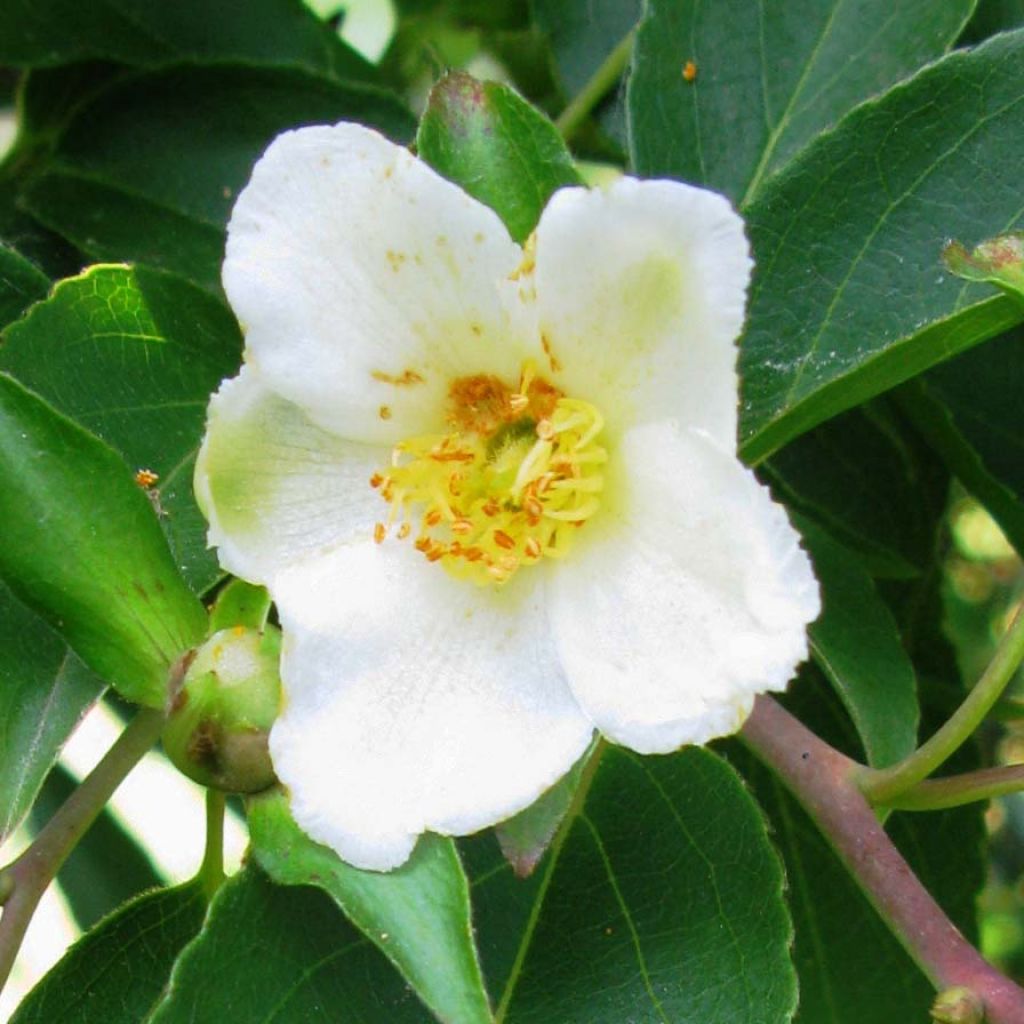

Stewartia monodelpha
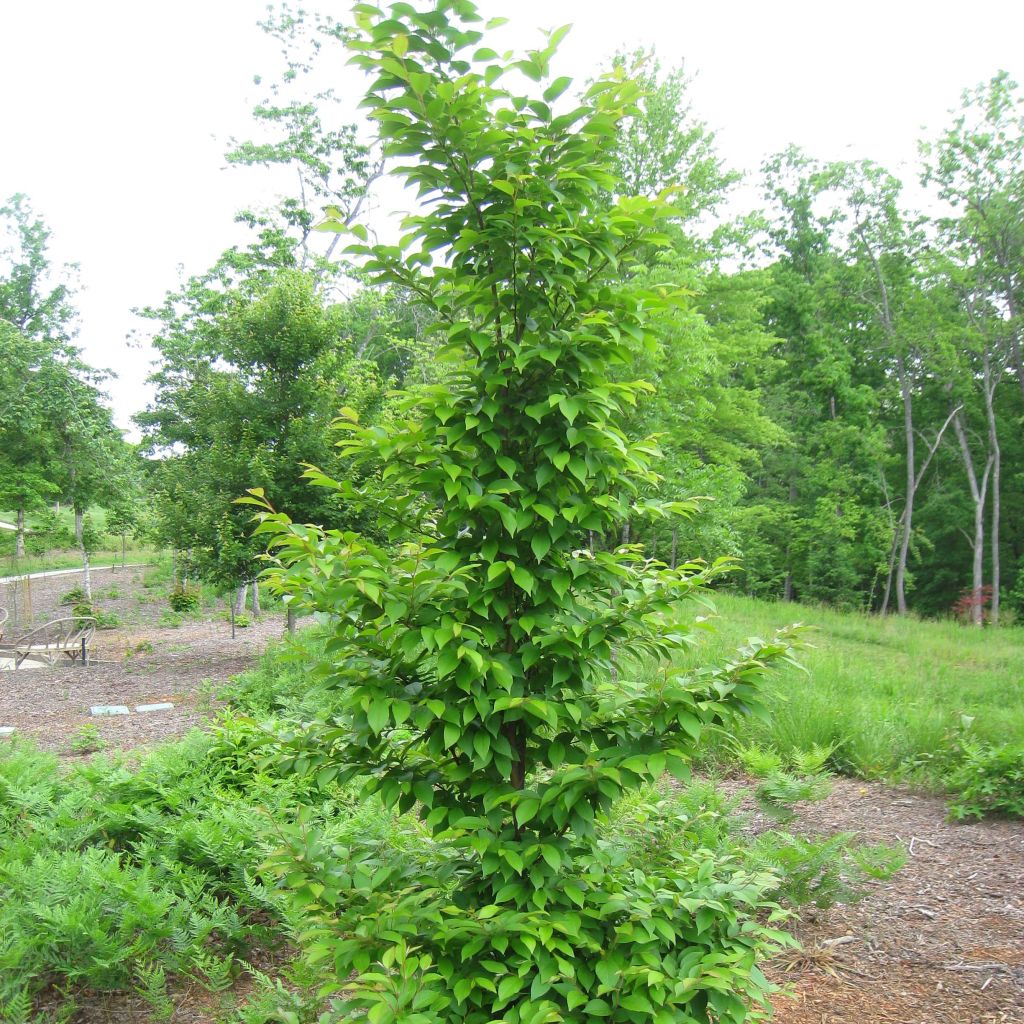

Stewartia monodelpha
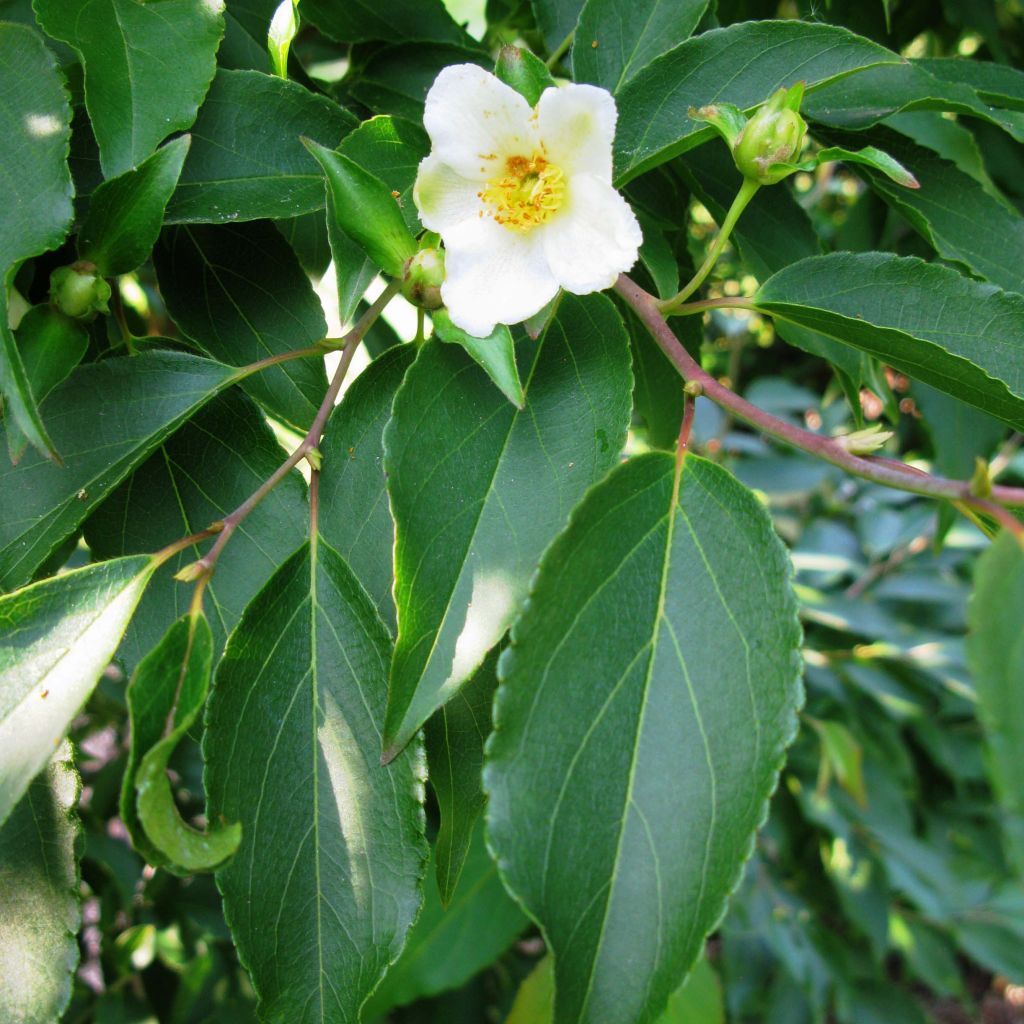

Stewartia monodelpha
Stewartia monadelpha
Stewartia monadelpha
Orangebark Stewartia
Why not try an alternative variety in stock?
View all →This plant carries a 24 months recovery warranty
More information
We guarantee the quality of our plants for a full growing cycle, and will replace at our expense any plant that fails to recover under normal climatic and planting conditions.
From €5.90 for pickup delivery and €6.90 for home delivery
Express home delivery from €8.90.
Delivery to Corse prohibited: UE law prohibits the import of this plant from mainland France to Corse as part of the fight against Xylella fastidiosa. Please accept our sincere apologies.
More information
Does this plant fit my garden?
Set up your Plantfit profile →
Description
Stewartia monadelpha, sometimes erroneously called False Camellia Stewartia, is an Asian bush related to the camellia. This Stewartia is well known to bonsai enthusiasts who appreciate it for its regularly layered silhouette, extremely decorative bark, and splendid autumn colours. It is also a very beautiful garden shrub, of interest throughout the year, especially when it bursts into its pretty white cup-shaped flowers throughout the summer. Once established, it is hardy in the ground and can be grown in partial shade, in the company of other plants that also appreciate moist environments and neutral to acidic, low-limestone soils.
Stewartia monadelpha, very popular in Japan where it features prominently along the streets of Tokyo, belongs to the family Theaceae. It is endemic to Japan. This plant forms a large bush or a small tree with an upright, regular habit and a crown that is initially pyramidal and then oval and semi-open over time. Its growth is slow, reaching, in favourable climates, approximately 6m (20ft) in height and 4m (13ft) in spread at maturity. Its smooth bark sheds in thin plates of orange to purple-brown, revealing a 'new skin' of cinnamon colour. All these shades form a unique and decorative ensemble. In spring, the young leaves are tinged with pink and slightly downy when they emerge. The mature leaves are a bright, glossy green until late summer. They then successively take on orange, red, purple, and violet tones before falling late in autumn. These are entire, leathery leaves, broadly dentate along the edge. The flowering of this Stewartia is among the most modest of the genus, but the small size of the flowers is compensated for by their abundance. Flowering typically begins in June and continues until August. The solitary flowers appear in the axils of the leaves. In the form of open cups, they are composed of white petals surrounding a yellow heart with violet stamens. This flowering gives way to numerous curious fruits, similar to small winged walnuts, measuring about 2.5 cm (1in) by 1.5 cm (0.6in)
A shrub used to a rather humid climate and non-alkaline soil, Stewartia monadelpha is sensitive to severe frost when young and will also suffer after it is established when frost persists over time. It will be more sensitive to cold when grown in a pot as opposed to in the ground. It can be planted in the garden in isolation or in combination with other acid-loving plants (Rhododendron, azaleas, Hydrangea, Hamamelis) in a flowering hedge. It deserves a prominent location, at the entrance of the garden, by the house, or at the bend of a path. One might surround its base with autumn bulbs, such as colchicums or cyclamens of Naples. As the shrub seems to tolerate slightly limestone soils, it can also be planted alongside Calycanthus venus, Hamamelis, Clethra barbinervis and Fothergilla, charming shrubs that are sometimes overlooked.
This Stewartia, one of the most spectacular of the genus, reaches 15 to 20m (49 to 66ft) in height in the forests of Honshu Island in Japan. Giant specimens have been observed on Yakushima Island - these venerable subjects are said to be two to three hundred years old. The most beautiful specimens, spared from felling, are often found close to temples and other sacred places.
Report an error about the product description
Stewartia monadelpha in pictures
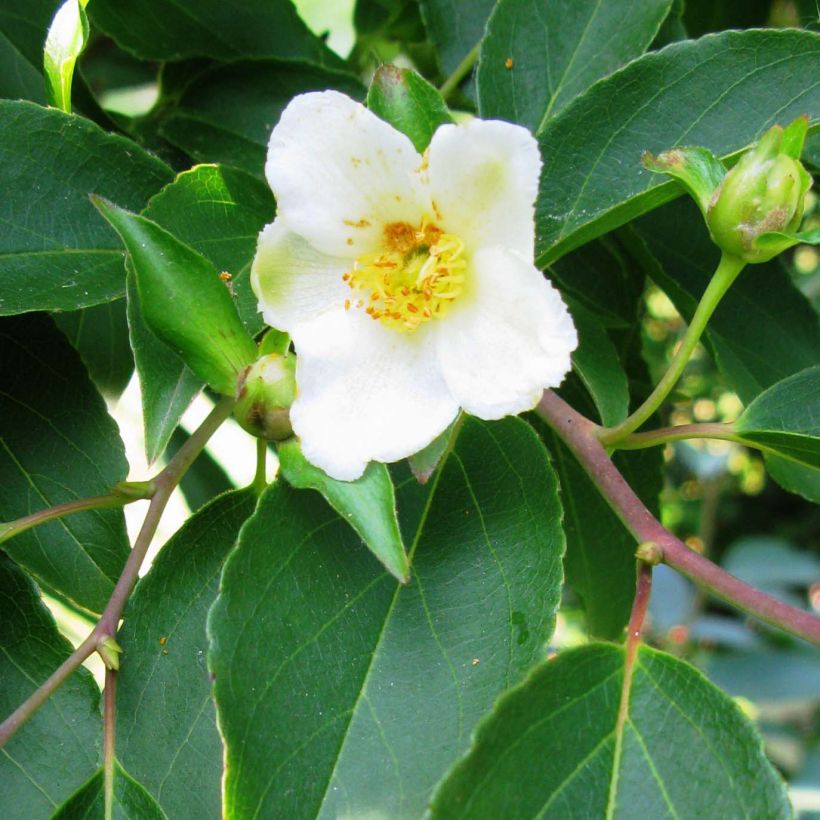

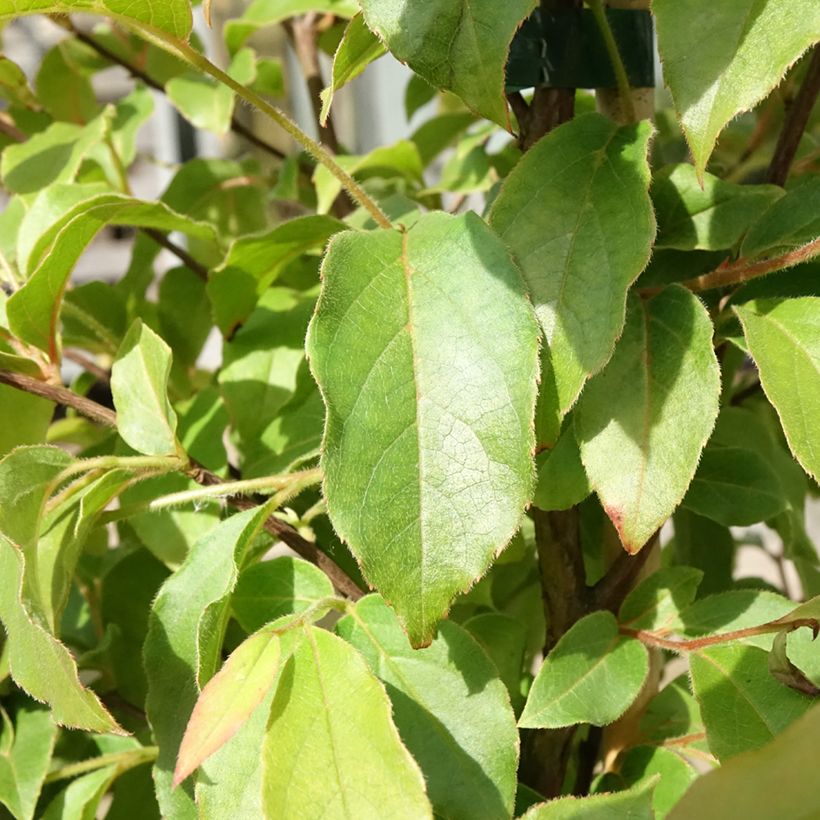

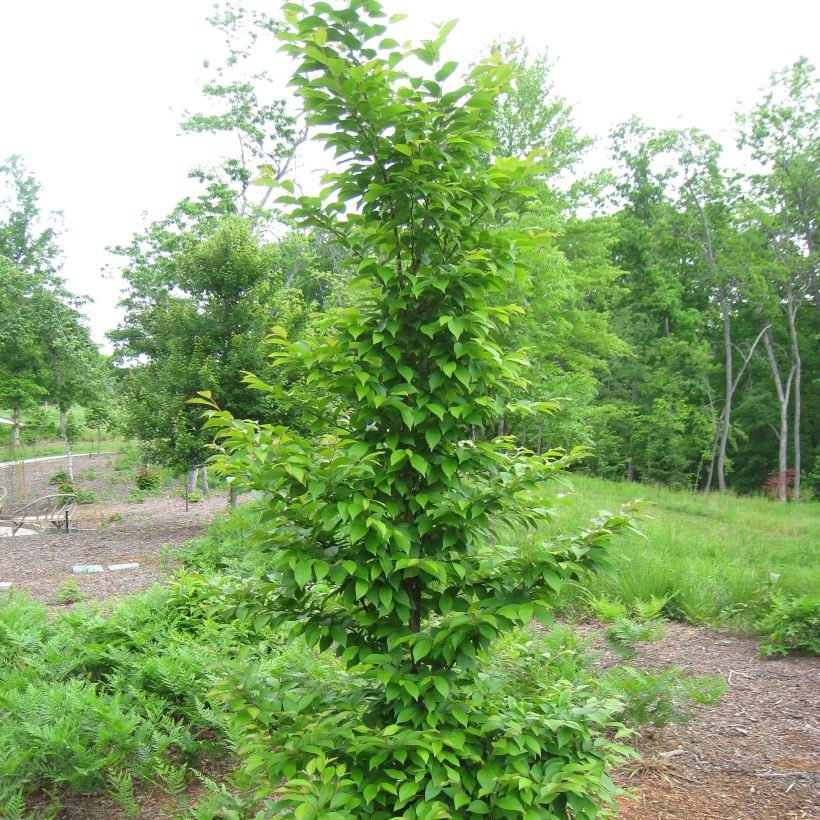

Plant habit
Flowering
Foliage
Botanical data
Stewartia
monadelpha
Theaceae
Orangebark Stewartia
East Asia
Other Stewartia
Planting and care
Stewartia monodelpha is a bush ideally suited to neutral to acidic soil devoid of limestone, though it tolerates the presence of limestone in small quantities. It appreciates moist, humus-rich but well-drained, light and rather fertile soils. A non-limestone loamy soil, or sandy soil, would also be suitable. Preferably choose a partially shaded location. However, you can cultivate it in full sun as long as the roots must remain moist. If these conditions are not met, it will struggle to thrive and never reach its full potential. It should be placed in a position sheltered from cold and drying winds, as young plants are sensitive to heavy frosts, as are those cultivated in pots. The bush should not be planted too deeply, with the top of the root ball covered with 3 cm (1in) of soil. In winter, cover it with a 5 to 7 cm (2 to 3in) thick mulch of leaf compost and crushed bark. Water during dry periods to retain soil moisture, as this bush dreads drought and heatwaves.
Planting period
Intended location
Care
This item has not been reviewed yet - be the first to leave a review about it.
Shrubs for semi-shade
Haven't found what you were looking for?
Hardiness is the lowest winter temperature a plant can endure without suffering serious damage or even dying. However, hardiness is affected by location (a sheltered area, such as a patio), protection (winter cover) and soil type (hardiness is improved by well-drained soil).

Photo Sharing Terms & Conditions
In order to encourage gardeners to interact and share their experiences, Promesse de fleurs offers various media enabling content to be uploaded onto its Site - in particular via the ‘Photo sharing’ module.
The User agrees to refrain from:
- Posting any content that is illegal, prejudicial, insulting, racist, inciteful to hatred, revisionist, contrary to public decency, that infringes on privacy or on the privacy rights of third parties, in particular the publicity rights of persons and goods, intellectual property rights, or the right to privacy.
- Submitting content on behalf of a third party;
- Impersonate the identity of a third party and/or publish any personal information about a third party;
In general, the User undertakes to refrain from any unethical behaviour.
All Content (in particular text, comments, files, images, photos, videos, creative works, etc.), which may be subject to property or intellectual property rights, image or other private rights, shall remain the property of the User, subject to the limited rights granted by the terms of the licence granted by Promesse de fleurs as stated below. Users are at liberty to publish or not to publish such Content on the Site, notably via the ‘Photo Sharing’ facility, and accept that this Content shall be made public and freely accessible, notably on the Internet.
Users further acknowledge, undertake to have ,and guarantee that they hold all necessary rights and permissions to publish such material on the Site, in particular with regard to the legislation in force pertaining to any privacy, property, intellectual property, image, or contractual rights, or rights of any other nature. By publishing such Content on the Site, Users acknowledge accepting full liability as publishers of the Content within the meaning of the law, and grant Promesse de fleurs, free of charge, an inclusive, worldwide licence for the said Content for the entire duration of its publication, including all reproduction, representation, up/downloading, displaying, performing, transmission, and storage rights.
Users also grant permission for their name to be linked to the Content and accept that this link may not always be made available.
By engaging in posting material, Users consent to their Content becoming automatically accessible on the Internet, in particular on other sites and/or blogs and/or web pages of the Promesse de fleurs site, including in particular social pages and the Promesse de fleurs catalogue.
Users may secure the removal of entrusted content free of charge by issuing a simple request via our contact form.
The flowering period indicated on our website applies to countries and regions located in USDA zone 8 (France, the United Kingdom, Ireland, the Netherlands, etc.)
It will vary according to where you live:
- In zones 9 to 10 (Italy, Spain, Greece, etc.), flowering will occur about 2 to 4 weeks earlier.
- In zones 6 to 7 (Germany, Poland, Slovenia, and lower mountainous regions), flowering will be delayed by 2 to 3 weeks.
- In zone 5 (Central Europe, Scandinavia), blooming will be delayed by 3 to 5 weeks.
In temperate climates, pruning of spring-flowering shrubs (forsythia, spireas, etc.) should be done just after flowering.
Pruning of summer-flowering shrubs (Indian Lilac, Perovskia, etc.) can be done in winter or spring.
In cold regions as well as with frost-sensitive plants, avoid pruning too early when severe frosts may still occur.
The planting period indicated on our website applies to countries and regions located in USDA zone 8 (France, United Kingdom, Ireland, Netherlands).
It will vary according to where you live:
- In Mediterranean zones (Marseille, Madrid, Milan, etc.), autumn and winter are the best planting periods.
- In continental zones (Strasbourg, Munich, Vienna, etc.), delay planting by 2 to 3 weeks in spring and bring it forward by 2 to 4 weeks in autumn.
- In mountainous regions (the Alps, Pyrenees, Carpathians, etc.), it is best to plant in late spring (May-June) or late summer (August-September).
The harvesting period indicated on our website applies to countries and regions in USDA zone 8 (France, England, Ireland, the Netherlands).
In colder areas (Scandinavia, Poland, Austria...) fruit and vegetable harvests are likely to be delayed by 3-4 weeks.
In warmer areas (Italy, Spain, Greece, etc.), harvesting will probably take place earlier, depending on weather conditions.
The sowing periods indicated on our website apply to countries and regions within USDA Zone 8 (France, UK, Ireland, Netherlands).
In colder areas (Scandinavia, Poland, Austria...), delay any outdoor sowing by 3-4 weeks, or sow under glass.
In warmer climes (Italy, Spain, Greece, etc.), bring outdoor sowing forward by a few weeks.

































